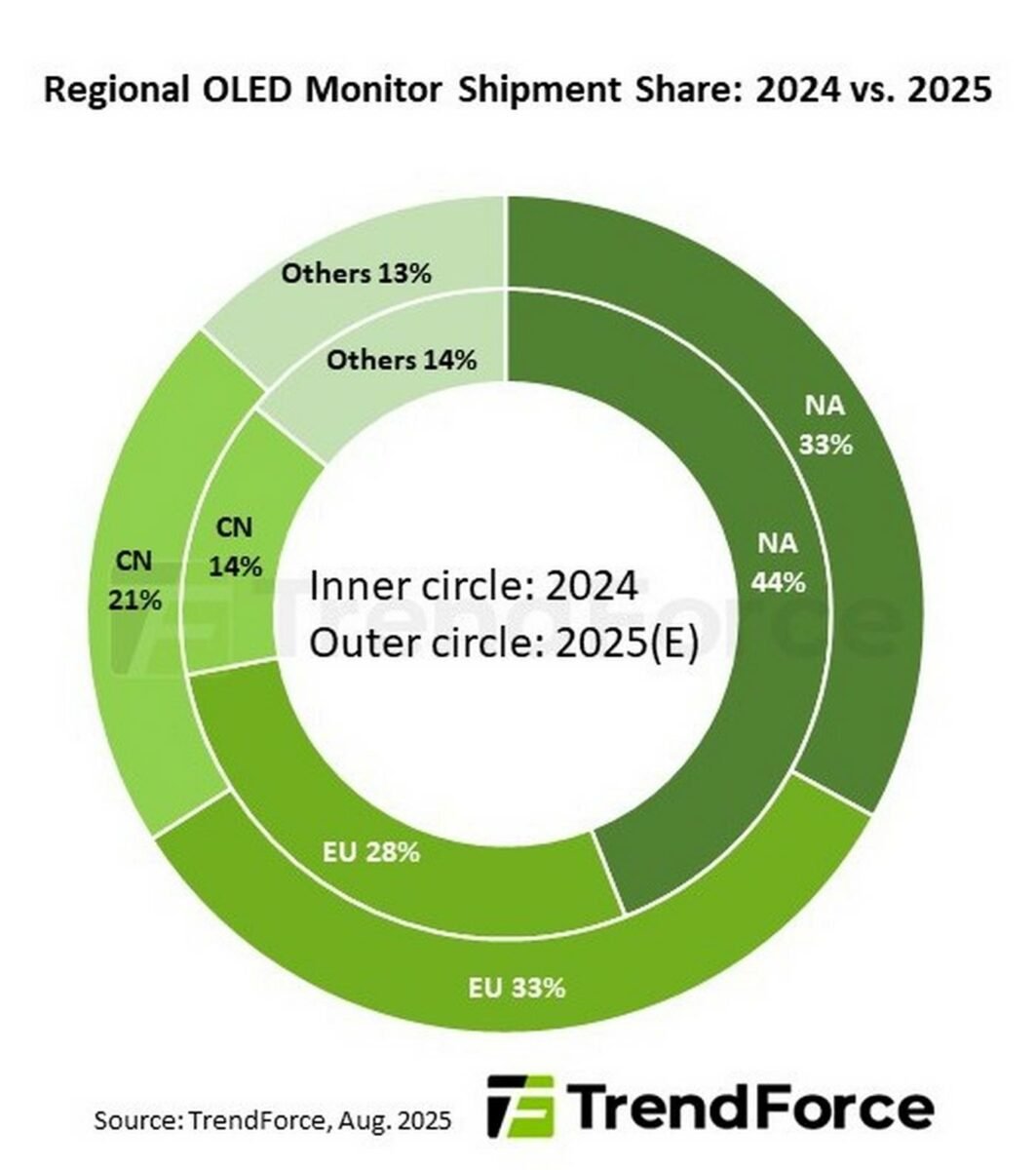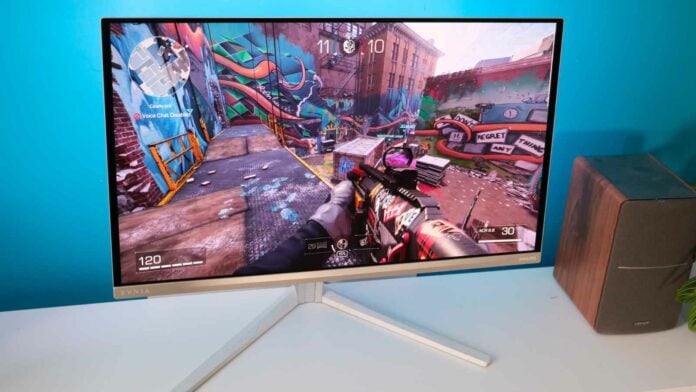TrendForce’s latest investigations have shown a strong demand for OLED-based monitors, mainly from the gaming segment. Driven by improved characteristics and aggressive promotion from brands and panel makers, OLED display shipments have seen a boost in all regions this year. The European and Chinese markets are expected to see a noticeable increase, representing more than 50% of the worldwide demand.
TrendForce forecasts that OLED monitor shipments will reach 2.66 million units in 2025, representing an 86% year-over-year increase, with a penetration rate of around 2% in the overall monitor market. Growth momentum is also expected to persist over the next few years, with penetration potentially reaching 5% by 2028. Truth be told, that’s still small fry in the big scheme of things.
However, the rise is not surprising considering the cost reductions OLED and QD-OLED monitors have enjoyed lately. While before you needed above £1,000 for a high-quality OLED display, nowadays you can get a high-end model at £800. Better yet, if you don’t need the absolute best, you can buy a great 360Hz or 165Hz QD-OLED monitor for less than £550. To put it simply, OLED-based monitors’ prices are closer than ever to their LCD counterparts, making them ever more appealing.

That said, while North America accounted for 44% of shipments in 2024, Europe and China are the ones driving demand in 2025, with 33% and 21%, respectively. This leaves North America and the rest of the world at 33% and 13%, respectively. While brands have focused their OLED monitor expansion efforts on North America in 2024, the newly implemented import tariffs are pushing them towards other markets. Europe’s high customer purchasing power and China’s growing middle-income households offer a large potential to adopt these more expensive OLED monitors. Add to that the strong demand from China’s internet cafes, and the forecasted growth becomes perfectly plausible.
Most OLED monitors are based on LG Display’s WOLED and Samsung Display’s QD-OLED panels. While this duopoly has the potential of keeping prices high, other brands’ ability to purchase these panels adds a lot of competition in the market, driving prices down. WOLED and QD-OLED’s different strengths, such as colour depth, brightness, and pixel structure, also help keep a healthy competition. For example, LG Display’s latest 4th-gen tandem OLED pushes brightness to new heights, thus Samsung Display can either come up with something new or lower its QD-OLED panel prices.
Now, what does this mean for us customers? Well, more shipments mean a higher availability and a growing competition, which should translate into lower prices. Combined with manufacturing optimisation, this could drop OLED-based monitors to a point where an LCD display is only recommended for work and static content. We surely won’t mind seeing £300 OLED monitors.


